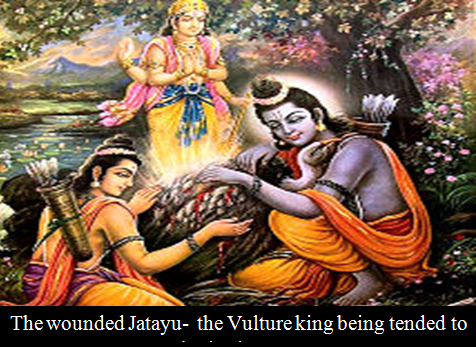Methodology for Collection of Vulture
There are a total of 127 birds at the centre of which 55 are White-backed vultures, 55 Long-billed vultures, 15 Slender-billed vultures and 2 Himalayan Griffons. Of the 55 White-backed vultures, two are juveniles which were hatched at the centre during the breeding season of 2007-08. and 3 are of 2008-09 breeding season. Of the 15 Slender-billed Vultures, one is a juvenile which hatched at the centre.
Vultures have been brought to the centre from various states. The maximum number of birds (N=35) have been brought from Gujarat followed by Rajasthan (N=22), Maharashtra (N=21), Haryana (N=20), Madhya Pradesh (N=17), Assam (N=14) and Delhi (N=1). Two Himalayan Griffons have been rescued from Haryana and are not part of the breeding programme.
So far, we have lost 9 White-backed vultures and 3 Long-billed vultures at the centre.
Nestling Collection
Nestlings are collected from the wild after they are 45 days old as by then their thermoregulation is well developed and they do not require beak to beak feeding. A very high percentage of mortalities in the wild occur at the nestling stage, hence, bringing nestlings into captivity saves individuals. The White-backed vultures and the Slender-billed vultures are tree nesters and nest on tall trees, sometimes as tall as 80 metres. The Long-billed vultures are cliff nesters and generally nest on inaccessible cliffs and rocky outcrops. Quite often, they nest in deep caves on a vertical face of the cliff. Nestling collection has been possible only due to the help from expert climbers trained in handling vultures. Nestlings are collected in specially designed duffel bags and lowered with the help of a rope to the team waiting on the ground. Once the nestlings are brought down, they are transported in specially designed wooden boxes.
A total of 7 White-backed vulture nestlings and 35 Long-billed vulture nestlings have been collected, so far, from the wild.
Trapping of Vultures
 The sub-adult and adult vultures have been successfully trapped from the wild with the help of the snake trap method. This method is very effective, inexpensive, totally non-invasive and quick. A fresh cattle or goat carcass is used as bait and the trapper sits in a grass hide some 10-15m from the carcass, waiting for vultures to feed. He uses a long bamboo pole which is about 60ft long and collapsible. The terminal end of the bamboo, of approx. 3' long, is very supple, thin and bifid. It is coated with very sticky glue, which is a mixture of the latex of peepal (Ficus religiosa) and mustard oil. When the vultures start feeding on the carcass, the bamboo pole is gradually slithered on the ground towards the foraging vultures by the trapper, sitting in the grass hide. When the bamboo is approx. 5 feet away, the trapper swiftly thrushes it on the body of the feeding vulture. The vulture is then unable to fly. The trapper then rushes and grabs the bird. The glue does not damage the plumage and comes of easily with any vegetable oil. A total of 14 White-backed and 14, most endangered, Slender-billed vultures have been trapped with the help of this method.
The sub-adult and adult vultures have been successfully trapped from the wild with the help of the snake trap method. This method is very effective, inexpensive, totally non-invasive and quick. A fresh cattle or goat carcass is used as bait and the trapper sits in a grass hide some 10-15m from the carcass, waiting for vultures to feed. He uses a long bamboo pole which is about 60ft long and collapsible. The terminal end of the bamboo, of approx. 3' long, is very supple, thin and bifid. It is coated with very sticky glue, which is a mixture of the latex of peepal (Ficus religiosa) and mustard oil. When the vultures start feeding on the carcass, the bamboo pole is gradually slithered on the ground towards the foraging vultures by the trapper, sitting in the grass hide. When the bamboo is approx. 5 feet away, the trapper swiftly thrushes it on the body of the feeding vulture. The vulture is then unable to fly. The trapper then rushes and grabs the bird. The glue does not damage the plumage and comes of easily with any vegetable oil. A total of 14 White-backed and 14, most endangered, Slender-billed vultures have been trapped with the help of this method.
Vultures rescued
In all, 38 White-backed vultures have been rescued and brought to the centre. Of these, 33 birds have been rescued during kite flying, which is part of the festival "Uttrayan" in Gujarat. A good number of birds get serious injuries due to kite strings. Grounded glass is used to coat the string so that in a duel with other flying kites, the ground glass coated string cuts through the strings of other kites. The flying birds get entangled in these strings and suffer serious injuries. Many birds suffer serious wing damage and are maimed for life, while many die of excessive bleeding. Vulture relief camps organized by the Gujarat Forest Department, Animal Health foundation, Bird Conservation Society of Gujarat and VCBC, Pinjore, have provided first aid care and surgery, as necessary, to these birds. The birds were then transported to Pinjore and are part of the breeding programme.
A total of 4 White-backed vultures and 1 Long-billed vulture have been rescued by individuals, NGO's and Forest Departments of various states and sent to the centre.

